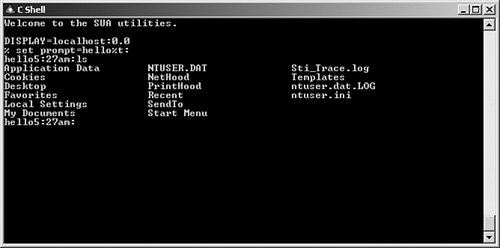Subsystem for Unix-Based Applications as a Component of Services for Unix
| Administrators familiar with the older versions of Services for Unix will notice one immediate change. Interix has been replaced with the Subsystem for Unix-based Applications. SUA is not an emulation product, and all applications and scripts run natively in the built-in POSIX subsystem of Windows Server 2003. SUA fills the gap between development on Unix platforms and development in Windows. It was written to allow programmers familiar with Unix to continue to use the most familiar programming tools and scripts, such as grep, tar, cut, awk, vi, and many others. In addition, with limited reprogramming efforts, applications that run on Unix-based systems can be ported over to the Wintel platform, building on the low cost of ownership of Windows while retaining software investments from Unix. SFU R2 further enhances the capabilities of the Unix subsystem. Performance increases for File I/O, pipe bandwidth, and overall response time have been noticeable, in some cases doubling in speed. SUA ScriptingAdministrators familiar with Unix environments will feel at home working with Interix as both the Korn and C shells are available, and both behave exactly as they would in Unix. SFU also supports the single-rooted file system through these shells, which negates the need to convert scripts to support drive letters. The single-rooted file system allows for a great deal of functionality, allowing scripts written for Unix to more natively port over to a Windows environment. SUA Tools and Programming LanguagesSUA supports all common Unix tools and utilities, with all the familiar commands such as grep, man, env, pr, nice, ps, kill, and many others. Each tool was built to respond exactly the way it is expected to behave in Unix, as illustrated in Figure 8.5, and Interix users can build or import their own customizable tools using the same procedures that they would in a Unix environment. Figure 8.5. Using standard Unix commands with the C shell. |
EAN: 2147483647
Pages: 499
- Chapter I e-Search: A Conceptual Framework of Online Consumer Behavior
- Chapter V Consumer Complaint Behavior in the Online Environment
- Chapter X Converting Browsers to Buyers: Key Considerations in Designing Business-to-Consumer Web Sites
- Chapter XI User Satisfaction with Web Portals: An Empirical Study
- Chapter XIV Product Catalog and Shopping Cart Effective Design